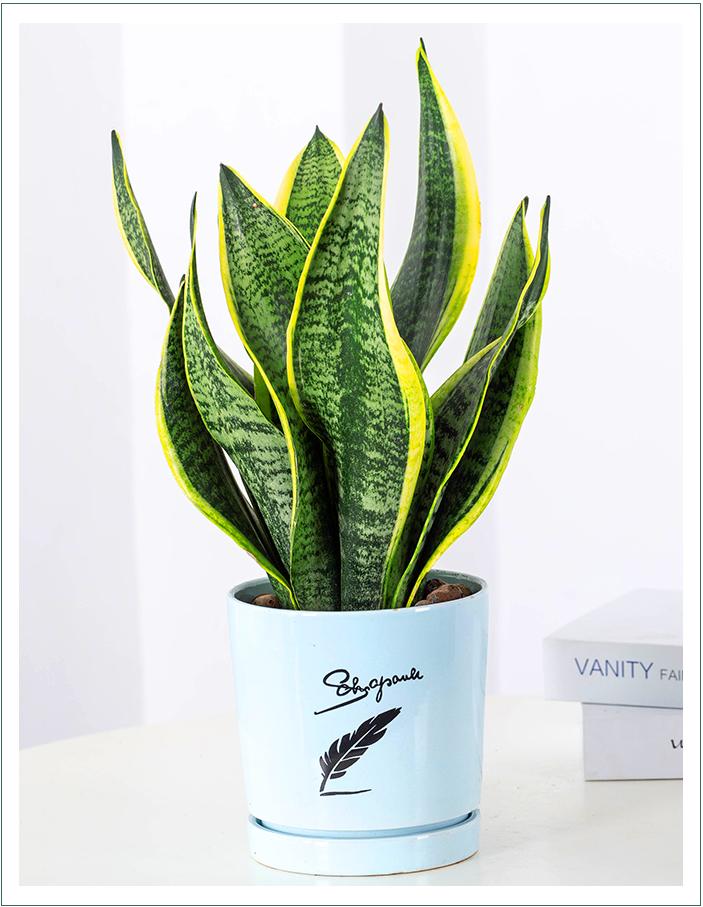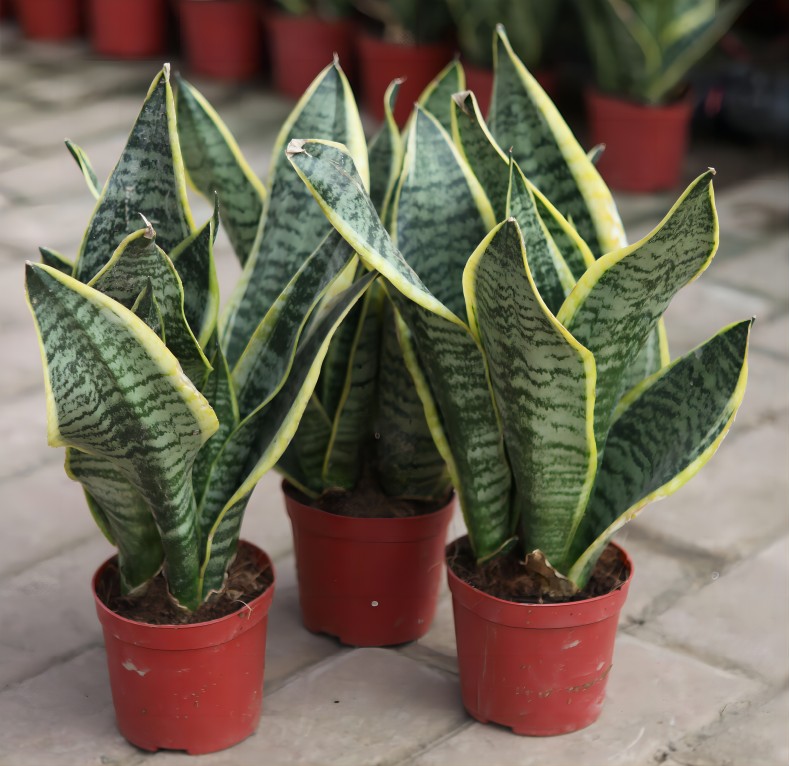Sansevieria Trifasciata Lanrentii is mainly propagated through the split plant method, and can be raised all year round, but spring and summer are the best. Take the plants out of the pot, use a sharp knife to separate the sub plants from the mother plant, and try to cut as many sub plants as possible. Apply sulfur powder or plant ash to the cut area, and dry slightly before placing them in the pot. After splitting, it should be placed indoors to prevent rain and control watering. After the new leaves grow, they can be transferred to normal maintenance.
The Breeding Method of Sansevieria Trifasciata Lanrentii
1. Soil: The cultivation soil of Sansevieria Lanrentii is loose and requires breathability. So when mixing the soil, 2/3 of the rotten leaves and 1/3 of the garden soil must be used. Remember that the soil must be loose and breathable, otherwise water will not evaporate easily and cause root rot.
2. Sunshine: Sansevieria Trifasciata Lanrentii likes sunlight, so it is necessary to bask in the sun from time to time. It is best to place it in a place where it can be directly illuminated. If conditions do not allow, it should also be placed in a place where the sunlight is relatively close. If left in a dark place for a long time, it can cause the leaves to turn yellow.
3. Temperature: Sansevieria Trifasciata Lanrentii has high temperature requirements. The suitable growth temperature is 20-30 ℃, and the minimum temperature in winter cannot be lower than 10 ℃. It is important to pay attention, especially in northern regions. From late autumn to early winter, when it is cold, it should be kept indoors, preferably above 10 ℃, and watering should be controlled. If the room temperature is below 5 ℃, watering can be stopped.
4. Watering: Sansevieria Trifasciata Lanrentii should be watered in moderation, following the principle of preferably dry rather than wet. When new plants sprout at the roots and neck in spring, the pot soil should be watered appropriately to keep it moist. In summer, during the hot season, it is also important to keep the soil moist. After the end of autumn, the amount of watering should be controlled, and the soil in the pot should be kept relatively dry to enhance its cold resistance. During the winter dormancy period, water should be controlled to keep the soil dry and avoid watering the foliage.
5. Pruning: The growth rate of Sansevieria Trifasciata Lanrentii is faster than other green plants in China. So, when the pot is full, manual pruning should be carried out, mainly by cutting off old leaves and areas with excessive growth to ensure its sunlight and growth space.
6. Change the pot: Sansevieria Trifasciata Lanrentii is a perennial plant. Generally speaking, the pot should be changed every two years. When changing pots, it is important to supplement the new soil with nutrients to ensure its nutritional supply.
7. Fertilization: Sansevieria Trifasciata Lanrentii does not require too much fertilizer. You only need to fertilize twice a month during the growing season. Pay attention to applying diluted fertilizer solution to ensure vigorous growth.
Post time: Apr-21-2023


